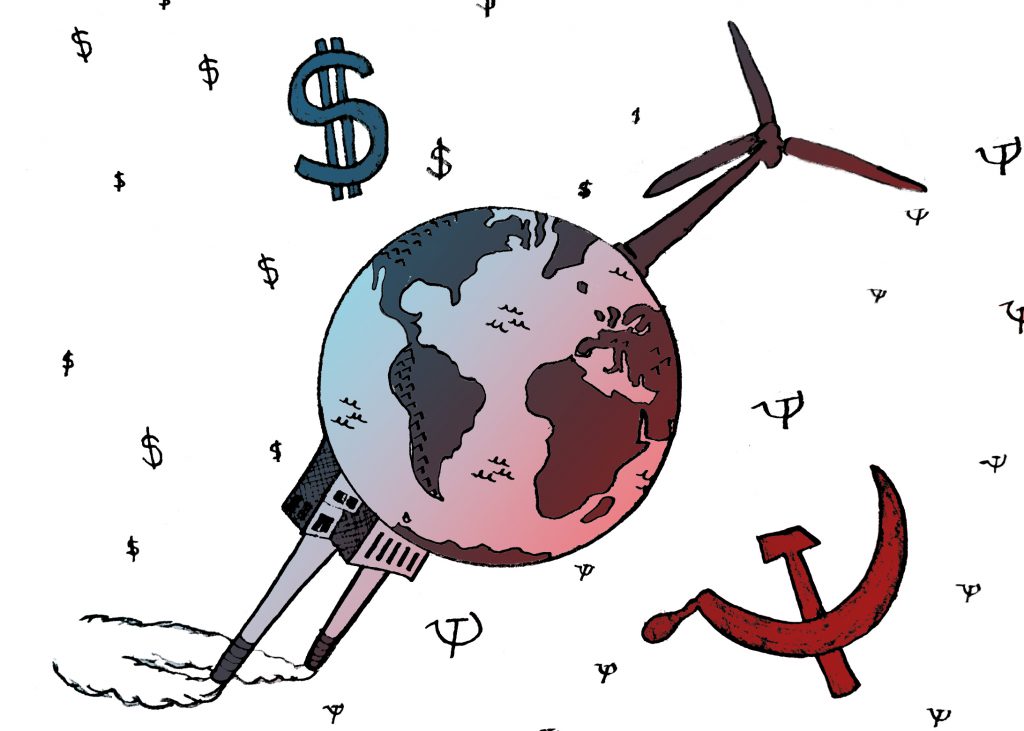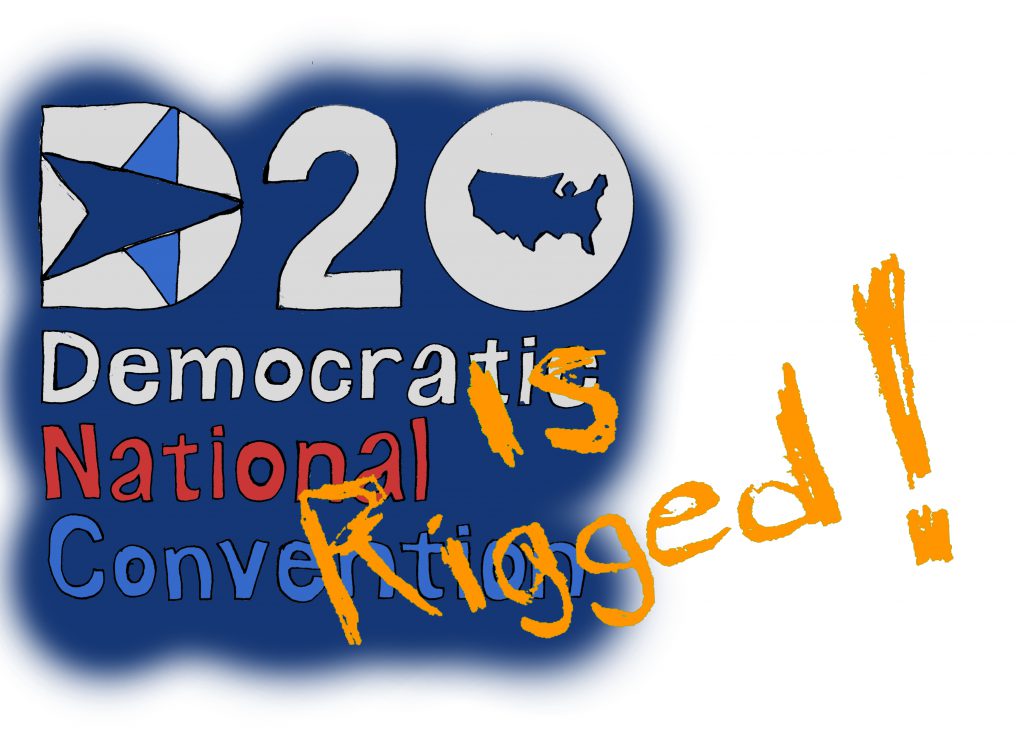In a plan to take back the White House, a Las Vegas debate stage was encroached by six Democratic hopefuls knocking their opponents’ political competency while promoting party unity. The scandal during the now immaterial February debate did not lie between policy differences or character assassinations. It was what most of the candidates were united on: the rules of the Democratic National Convention (DNC).
Minutes before a commercial break, NBC moderator Chuck Todd asked a rather unusual and confrontational question: “should the person with the most delegates at the end of this primary season be the nominee, even if they are short of a majority?”
Five contenders – Joe Biden, Elizabeth Warren, Michael Bloomberg, Pete Buttigieg, and Amy Klobuchar – were cautious to award the nomination under a plurality of support, placing the verdict on the DNC to “work its will” instead. The dissenting opinion came from Bernie Sanders, holding ground that “the person who has the most votes” should triumph regardless of the majority threshold.
The mere proposition of a contested primary validates a growing suspicion that the 2020 election is systematically engineered against Sanders and his populist-left movement. Democrats have felt the political fallout following Hillary Clinton’s nomination in 2016, with criticisms detailing a lack of transparency to election tampering. After a slew of DNC reforms, selecting the presidential nominee is bringing progressives and moderates into an ideological civil war that no faithful Democrat wants to acknowledge.
To understand the political significance of Chuck Todd’s question, let us first contextualize the drama that has unfolded in the past five years and what a contested election would mean in 2020.
The Primary Process: A Brief Overview
With all its technical jargon and political underpinnings, the primary process is a year-long popularity contest designed to filter out party contestants. Registered Democrats who plan to seek the nomination first need 65,000 individual donors from twenty states to woo party officials (in July 2019). The arbitrary number generally acts as a threshold to filter out low-charisma contenders and has steadily increased to 225,000 donors since February 2020.
Once the DNC is satisfied, candidates speak on their policy proposals in 60-second intervals for a televised debate. Receiving airtime has an additional requirement of garnering at least 10% support from four “pre-approved” polls (as of February).[1] Those qualified will be lucky enough to speak up to 20 minutes, while the less fortunate are placed into irrelevancy.
The substantive portion of the primary starts in February when candidates are judged behind the voting booth (if it is a caucus, inside a school gymnasium). After paying a fee to have their name on the official state ballot, candidates launch massive media and canvassing campaigns to receive the state’s endorsement. The trick here is to receive at least 15% of the popular vote to be awarded pledged delegates. Evidently, a larger share of the popular vote equates to a larger share of the state’s delegation. With 3,979 of these representatives in the 2020 Democratic primary, the road to the nomination lies on candidates to win a simple majority, or 1,991 delegate endorsements.
Finally, the National Convention would invite the remaining Democratic contestants along with the 3,979 delegates to form a final verdict on the nominee. This stage of the process is predictable if a candidate surpassed the delegate threshold before the convention date. With multiple front-runners, however, it is possible to receive a plurality of the delegation but not the statistical majority (above 50%). The DNC’s fail-safe for this dilemma is two-fold. If the initial tally at the Democratic Convention does not define a clear winner with the threshold, pledged delegates have the opportunity to switch their endorsement for another contender. This can happen during the first convention ballot if someone out of the race gives their delegation permission to disperse. Then there is the use of “superdelegates,” or representatives from the Democratic Party itself – House Representatives, Senators, Governors, DNC members – that are free to endorse anyone at anytime. Superdelegates have the numerical power to break a plurality, which is why they initially vote alongside pledged delegates to prevent brokered conventions. Superdelegates are controversial because they are specifically designed to overpower the average American voter, sometimes up to a 7,000 to 1 margin.
The Political Fallout of the 2016 Primary
The presence of Donald Trump and Bernie Sanders back in the national spotlight fuel resentment and bitter nostalgia from the most divisive election in American history. But the political drama of 2016 began several months prior in a dimly lit, smoke-filled room of the DNC headquarters.
The Democratic Party was in major financial debt following Obama’s 2012 campaign, having neglected to fundraise as it did in preceding pre-election seasons. Debbie Wasserman Schultz, then-Chair of the DNC, was desperate to raise last-minute revenues. According to a 2017 revelation by DNC strategist Donna Brazile, Hillary Clinton made a deal with Schultz to funnel her own money into the party for assurance in receiving the nomination.[2] The secret arrangement virtually nullified the primary process before it began. Candidate Martin O’Malley, Clinton’s challenger, never had a chance.
Couple that troubling factor with speculation that Clinton was going to run against Florida Governor Jeb Bush, making it a battle of two unlikeable family dynasties. Clinton had below average favorability when she announced her run. President Obama’s approval ratings have shown far more optimism, which the Democratic leadership took as a political advantage for the party. Clinton would run with Obama’s status quo despite her decades-long controversial reputation in political life and did so unopposed.
Progressive Democrats, on the contrary, found Obama’s legacy to be underwhelming in comparison to the FDR-LBJ figure they hoped in 2008. A big criticism was his lack of Wall Street regulations following the subprime mortgage crisis, which a Huffington Post op-ed claimed allowed “bankers to ride into the sunset” with a taxpayer-funded bailout.[3] Over time, the volatility of the recession had fundamentally shifted the political culture toward economic populism, including the Tea Party movement and Occupy Wall Street Protests of 2011.
Neither the Republican nor Democratic Party had envisioned a populist invasion in their national agenda. Trump’s sudden candidacy became the personification of Sigmund Freud’s “id”; the unfiltered instinctual cynicism amongst a large subset of Republican voters who favored nationalist protectionism since the financial crash. Having taken every opportunity to exploit his public persona as an “outsider” uncovering the “establishment,” Trump single-handedly put an end to the Bush family reign.
The same couldn’t be said for Bernie Sanders, whose purpose to take on “the 1%” through his New Deal vision became a major staple in his appeal. Clinton and Schultz had no interest in handing the party over to an Independent and self-described “democratic socialist.” Two months before a single vote was cast in Iowa, 359 of the 712 superdelegates would endorse Clinton, effectively giving her a 15% head start toward the winning threshold. Bernie received just eight superdelegates (0.34%). The timing of the endorsements was a calculation to make Sanders look unelectable. The DNC conspired with news outlets, reducing the debate schedule from 26 televised debates and forums (as seen from the 2008 primary) down to six while also sharing debate questions to the Clinton campaign in advance.[4][5] Much of this manipulation was an open secret until the infamous email by Wikileaks revealed this in July 2016. By that time, Sanders had already conceded while Clinton was campaigning a month away from Election Day.
A Contested Election Is a “Rigged” Election
Becoming the first “madame president” through the popular vote, Clinton lost from the delegation set by the Electoral College. Since then, Democrats have been left conducting damage control. Debbie Wasserman Schultz and Donna Brazil departed from the DNC’s leadership and Tom Perez, the new committee chair, made a media frenzy as he sought to make upcoming primaries “transparent and objective for Democrats to be engaged.”
What came out of the DNC Rules and Bylaws Committee were new parameters in 2020. While superdelegates are not fully abolished, they would now be barred from voting on the first ballot and will only enact on a vote if and after no candidate can receive a majority of support. Brokered conventions are rare – the last plurality vote happened in 1952 – so the new guidelines were as a perceived victory for Sanders and a political victory for Perez. What are the chances that a contested election would have superdelegates interfere with Bernie’s 2020 campaign again?
In a perfect coincidence, the 2020 primary has accompanied an unprecedented volume of contestants; a total of 29 candidates. Both the Iowa Caucus and the New Hampshire Primary divided their endorsements to the top five in the race, making a contested election more plausible. For many Bernie supporters, they are simply unconvinced by this mere happenstance. Having five Democratic candidates assert their trust to the DNC’s superdelegate-backed vote was a major betrayal that Tom Perez was assigned to relinquish.
Mutually Assured Destruction
With the race narrowed down to Joe Biden and Bernie Sanders, the prospects of a contested election are no longer pertinent. Even so, this factor does not ease Progressives who find it bizarre for Sanders to fight an uphill battle despite his record-breaking grassroots support.
It is one of several examples that illustrate an open prejudice against a large subset of the Democratic constituency. When The New York Times interviewed Democratic Party officials in early March, they causally discussed their eagerness to “risk intraparty damage to stop [Bernie’s] nomination at the national convention” if given the opportunity.[6] By giving zero consideration to the young, impressionable Bernie voters that have spent their time and money to engage in democracy, the constituency is disposable. With that, the political atmosphere reeks of 2016 all over again.
There is no projection that the two voter blocks of the Democratic Party are going to unite anytime soon. No matter how much “transparency” Tom Perez wants to run on, the DNC will continue to become indistinguishable from the mafia-like politics seen during the Tammany Hall period. But more voters are becoming immune to the political game and are keeping a watchful eye between the Sanders and Biden campaign. Whether the party will heal or implode remains to be seen this July.
Work Cited
[1] “DNC Announces Qualification Criteria For Fifth Presidential Primary Debate.” Democrats. DNC Services Corporation, 23 Sept. 2019. Web. 17 Mar. 2020.
[2] Merica, Dan, and Maegan Vazquez. “Former DNC Chair Torches Clinton in New Book | CNN Politics.” CNN. Cable News Network, 03 Nov. 2017. Web. 17 Mar. 2020.
[3] Carter, Zachary D. “Obama’s $400,000 Wall Street Speech Is Completely In Character.” HuffPost. HuffPost, 27 Apr. 2017. Web. 17 Mar. 2020.
[4] Jacobs, Ben. “Democratic Primary Debate Schedule Criticized as Clinton ‘coronation’.” The Guardian. Guardian News and Media, 06 Aug. 2015. Web. 17 Mar. 2020.
[5] Sainato, Michael. “Wikileaks Reveals Mainstream Media’s Coziness With Clinton.” Observer. Observer, 09 Aug. 2016. Web. 17 Mar. 2020.
[6] Lerer, Lisa, and Reid J. Epstein. “Democratic Leaders Willing to Risk Party Damage to Stop Bernie Sanders.” The New York Times. The New York Times, 27 Feb. 2020. Web. 17 Mar. 2020.



